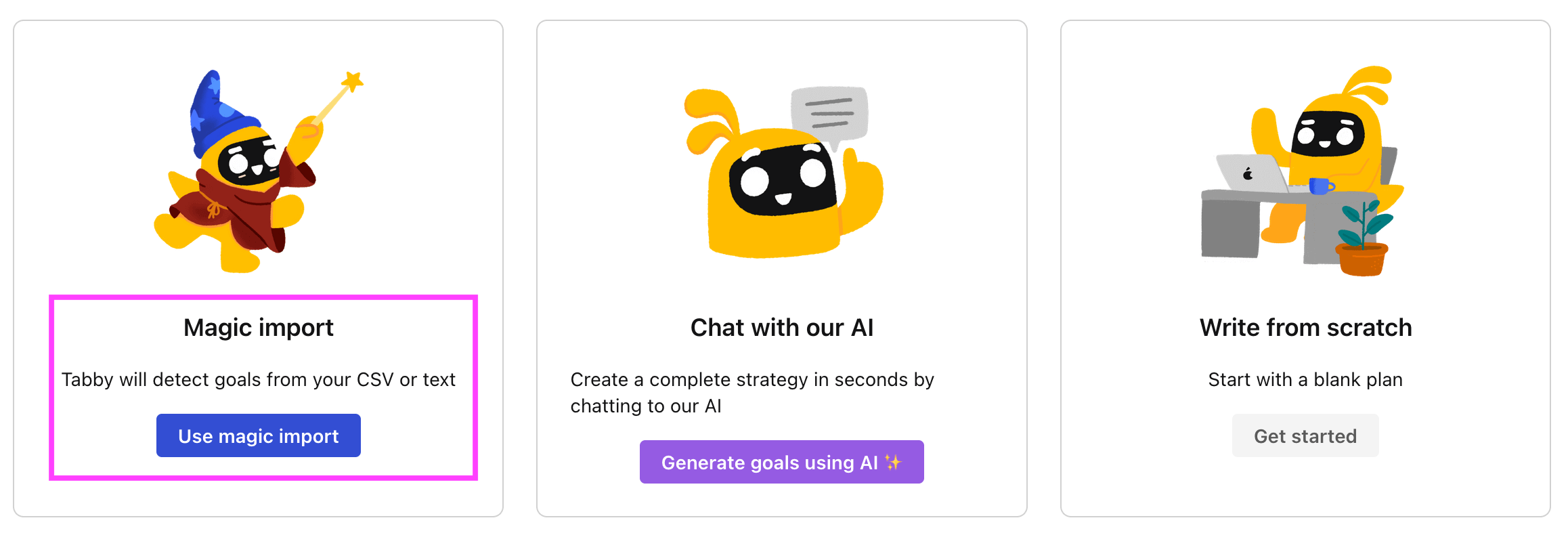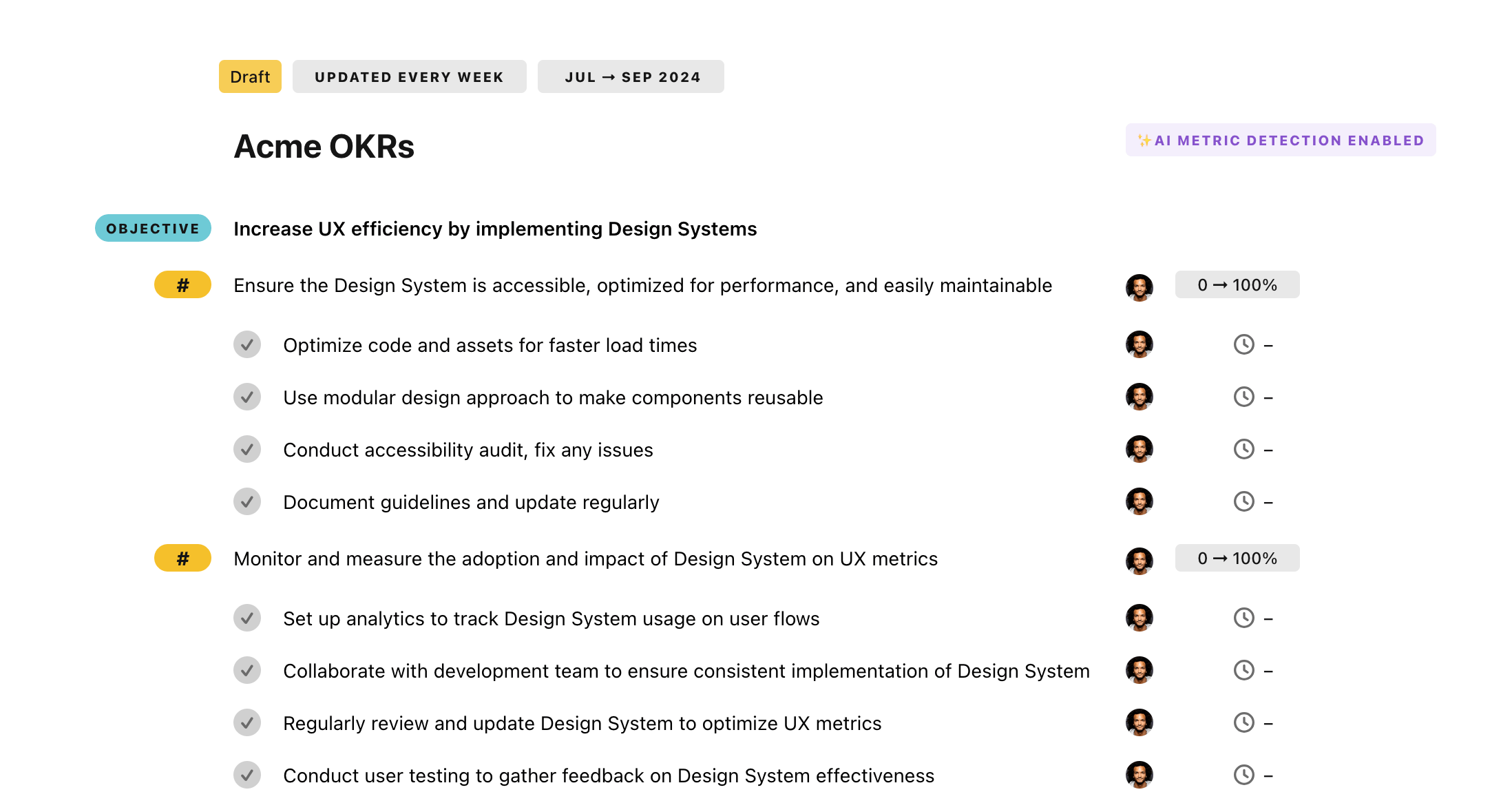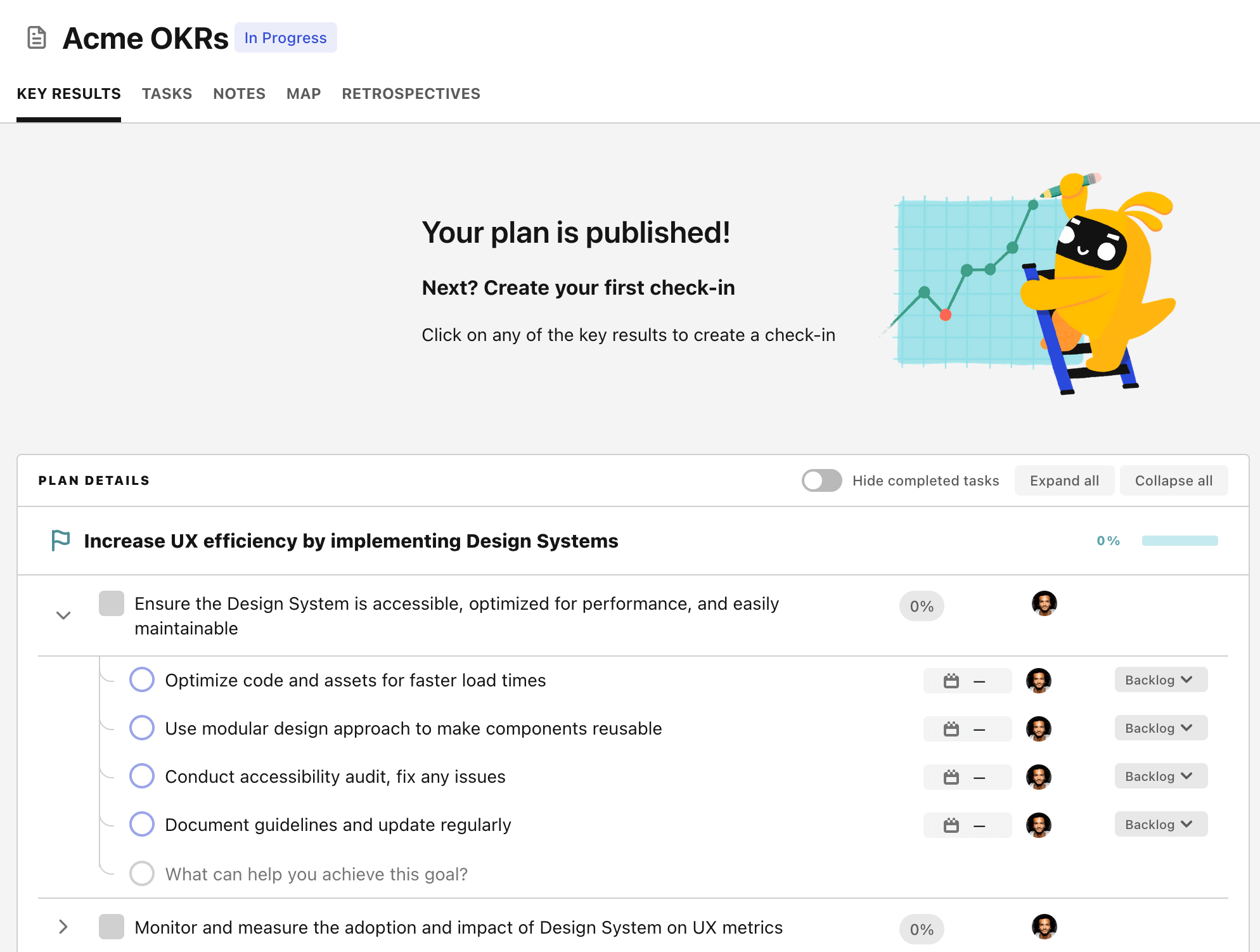OKR template to enhance and quantify key performance measurement
Your OKR template
Another objective is to create comprehensive metrics to assess the performance of the employee across all departments. This will be achieved by designing a standard evaluation form incorporating these metrics, identifying relevant performance indicators for each department, and conducting regular performance appraisal sessions.
Training the management in the use and interpretation of evaluation tools is also a crucial aspect of this OKR. The initiatives call for scheduling training sessions, creating case studies, and conducting real-time practice sessions to provide a hands-on experience.
The metrics range from a scale of 0 to 100, wherein reaching 100 signifies high employee satisfaction based on identified measures, comprehensive performance evaluation across departments, and efficient use of evaluation tools by the management.
ObjectiveEnhance and quantify key performance measurement
KRAchieve 90% employee satisfaction in feedback process based on performance evaluation metrics
Develop clear, fair performance evaluation criteria
Provide timely, constructive feedback to employees
Implement regular anonymous employee feedback surveys
KRDevelop comprehensive metrics to evaluate employee performance across all departments
Design a standard evaluation form incorporating these metrics
Identify key performance indicators for each department
Implement regular performance appraisal sessions
KRTrain management in use and interpretation of performance evaluation tools
Schedule training sessions on performance evaluation tools
Develop case studies to facilitate understanding
Conduct real-time practise sessions for hands-on experience
How to edit and track OKRs with Tability
You'll probably want to edit the examples in this post, and Tability is the perfect tool for it.
Tability is an AI-powered platform that helps teams set better goals, monitor execution, and get help to achieve their objectives faster.
With Tability you can:
- Use AI to draft a complete set of OKRs in seconds
- Connect your OKRs and team goals to your project
- Automate reporting with integrations and built-in dashboard
Instead of having to copy the content of the OKR examples in a doc or spreadsheet, you can use Tability’s magic importer to start using any of the examples in this page.
The import process can be done in seconds, allowing you to edit OKRs directly in a platform that knows how to manage and track goals.
Step 1. Sign up for a free Tability account
Go tohttps://tability.app/signup and create your account (it's free!)
Step 2. Create a plan
Follow the steps after your onboarding to create your first plan, you should get to a page that looks like the picture below.

Step 3. Use the magic importer
Click on Use magic import to open up the Magic Import modal.
Now, go back to the OKR examples, and click on Copy on the example that you’d like to use.

Paste the content in the text import section. Don’t worry about the formatting, Tability’s AI will be able to parse it!

Now, just click on Import from text and let the magic happen.

Once your example is in the plan editor, you will be able to:
- Edit the objectives, key results, and tasks
- Click on the target 0 → 100% to set better target
- Use the tips and the AI to refine your goals
Step 4. Publish your plan
Once you’re done editing, you can publish your plan to switch to the goal-tracking mode.

From there you will have access to all the features that will help you and your team save hours with OKR reporting.
- 10+ built-in dashboards to visualise progress on your goals
- Weekly reminders, data connectors, and smart notifications
- 9 views to map OKRs to strategic projects
- Strategy map to align teams at scale